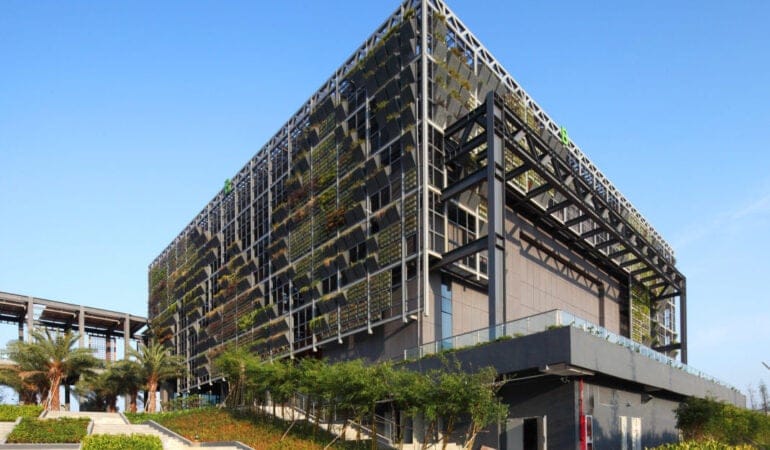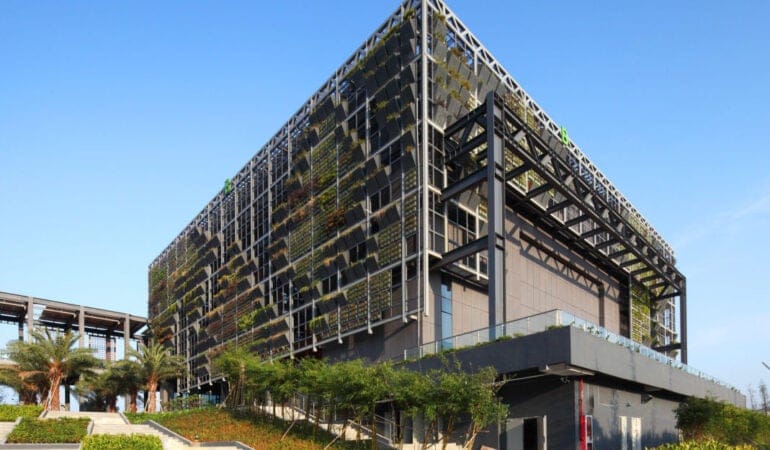Resources
Current Property Tax Trends
Property Tax Trends 2023–2024 (Catherine Collins, George Washington Institute of Public Policy)
This report provides an overview of new developments in property taxation in 2023 and 2024. Special attention is given to changes in eligibility requirements for property tax relief programs. A second focus concerns initiatives designed to improve housing affordability, such as tax incentives for new developments and support for low-income owners and renters. There is a review of measures intended to assist specific classes of taxpayers, such as natural disaster victims, seniors, disabled veterans, and those facing rapidly rising in property values. Finally, the report provides an overview of initial state responses to new Supreme Court requirements concerning the disposition of proceeds from foreclosure sales of tax delinquent properties.
Property Tax Trends 2020–2021 (Catherine Collins, George Washington Institute of Public Policy)
This report provides an overview of current trends in the property tax, including updates on recent ballot measures, the impact of Covid-19 on public transportation, tax base shifting patterns, and recent state actions to reduce the business personal property tax.
Property Tax Trends 2019–2020 (Catherine Collins, George Washington Institute of Public Policy)
This report provides an overview of current trends in the property tax, including updates on property tax actions taken by states and local governments in response to the COVID-19 crisis.
Property Tax Fundamentals
What Policy Makers Should Know About Property Taxes (Land Lines, January 2009)
Although property taxes continue to be a fundamental and important revenue source for local government, they also remain exceptionally controversial. This article discusses issues for which improved education and understanding is especially necessary.
Property Tax Rates
2013 Fifty-State Property Tax Comparison Study (Minnesota Center for Fiscal Excellence)
This study compares effective property tax rates for four classes of property located in the largest city of each state and D.C., the 50 largest cities in the United States, and a rural area of each state.
2012 Fifty-State Property Tax Comparison Study (Minnesota Center for Fiscal Excellence)
This study compares effective property tax rates for four classes of property located in the largest city of each state and D.C., the 50 largest cities in the United States, and a rural area of each state.
2011 Fifty-State Property Tax Comparison Study (Minnesota Taxpayers Association)
This study compares effective property tax rates for four classes of property located in the largest city of each state and D.C., the 50 largest cities in the United States, and a rural area of each state.
2010 Fifty-State Property Tax Comparison Study (Minnesota Taxpayers Association)
This study compares effective property tax rates for four classes of property located in the largest city of each state and D.C., the 50 largest cities in the United States, and a rural area of each state.
Estimating the Responsiveness of Residential Capital Investment to Property Tax Differentials (Lincoln Working Paper)
This paper analyzes the impact of property taxes on housing investment.
2009 Fifty-State Property Tax Comparison Study (Minnesota Taxpayers Association)
This survey compares property tax burdens in different regions and for different types of property in all the states and the District of Columbia.
A Reconnaissance of Currently Available Measures of Effective Property Tax Rates (Lincoln Working Paper)
Findings of a 50 state survey investigating available information on effective tax rates, and how those rates are calculated and reported.
Tax Limits
Property Tax Assessment Limits: Lessons from Thirty Years of Experience (Lincoln Policy Focus Report)
This study examines the structure and effects of different property tax limitation measures.
Property Tax Limitations and Local Fiscal Conditions: The Impact of Proposition 2 1/2 in Massachusetts (Lincoln Working Paper)
This is a study of the tax limitation measure introduced by ballot initiative in Massachusetts and its effect on local government finance.
The Algebra of Tax Burden Shifts from Assessment Limitations (Lincoln Working Paper)
A mathematical model that demonstrates how taxes must rise for some groups in order to provide tax relief to others.
The Variety of Property Tax Limits (State Tax Notes, November 2007)
Limitations on taxable values will not prevent tax increases if rates rise, and rate limitations may not restrict taxes if values rise. Restricting the total tax burden will not address problems in its distribution among taxpayers. Conversely, an equitably distributed burden may still rise rapidly if total spending increases substantially.
Surprise! An Unintended Consequence of Assessment Limitations (Land Lines, July 2007)
Early experiences with assessment limitation measures reveal an unanticipated result: some property owners seemingly targeted to benefit from lower assessments may be harmed instead.
Taxable Personal Property
Tax Flights (Lincoln Working Paper)
This report considers the special challenges posed by attempts to tax moveable property.
Real Estate Transfer Charges
Taxing Property Transactions Versus Taxing Property Ownership (Chapter 7 of Challenging the Conventional Wisdom on the Property Tax, Lincoln Book 2010)
This chapter examines the variety of transfer tax programs currently in use in the United States and compares them to annual property taxes in terms of equity, efficiency, and revenue potential and stability.
Legal Definition of Real Property
The Property Tax Base
Assessed Values by Property Class
Analysis of Detroit Property Tax Revenue Options (Lincoln Working Paper)
This paper considers fiscal alternatives available to a municipality facing a declining property tax base.
The Value of Residential Land and Structures During the Great Housing Boom and Bust (Lincoln Working Paper)
This is a major study of land and building values over the course of the current economic cycle.
Value Standard and Assessment Ratios
Assessment Regressivity: A Tale of Two Illinois Counties (Land Lines, January 2011)
This article provides an econometric analysis of assessment sale ratios in Illinois.
Property Tax Relief and Incentive Programs
Are Property Tax Abatements for Business Structures an Indirect Form of Land Value Taxation (Lincoln Working Paper)
This paper considers whether business tax incentives that generally reduce taxes on new construction may serve as a step towards land value taxation.
Tax Treatment of Agricultural Property
Preferential Assessment of Rural Lands in the United States (Lincoln Working Paper)
This paper provides an overview and critical analysis of special property tax provisions for agricultural land.
Taxing and Untaxing Land: Current Use Assessment of Farmland (State Tax Notes, September 2005)
The debate over appropriate property tax treatment of farmland touches on many complex issues, and tax and land policies addressing them often have contradictory elements as well. Nearly a half-century of experience with agricultural taxes based on use value rather than market value provides a vantage point from which to consider these controversies.
Current-Use Property Assessment and Land Development (Lincoln Working Paper)
This paper seeks to explore whether current use assessment can protect rural lands from development, surveys the actual penalties operative in the various states during 2002, and speculates about which states are more likely to have effective land preservation programs.
Incentives for Economic Development
Rethinking Property Tax Incentives for Business (Lincoln Policy Focus Report)
This policy focus report provides an overview of property tax incentives offered to businesses to promote economic development.
A Duration Analysis of Tax Increment Finance District Lifespans: The Case of Wisconsin (Lincoln Working Paper)
An empirical study of tax increment financing in times of declining value increments.
TIF at a Turning Point: Defining Debt Down (Lincoln Working Paper)
A review of arguments for and against the use of tax increment financing as a means of authorizing municipal debt.
Tax Increment Financing (Land Lines, January 2006)
Tax increment financing (TIF), designed to promote economic development by earmarking property tax revenue from increases in assessed values within a designated TIF district. Empirical analysis, using data from Illinois, suggests that the non-TIF areas of municipalities that use TIF grow no more rapidly, and perhaps more slowly, than similar municipalities that do not use TIF.
Incentives for Specific Property Improvements
Preferential Property Tax Programs
State Income Tax Credits for Conservation Easements: Do Additional Credits Create Additional Value? (Lincoln Working Paper)
This report analyzes the effect of state credits in encouraging donation of conservation easements.
Preferential Property Tax Treatment of Land (Lincoln Working Paper)
This report reviews the effectiveness of preferential taxation to achieve its intended goals, and describes current preferential tax programs for agricultural, forest, open space, recreational and other vacant land uses in the United States.
Residential Property Tax Relief Programs
Residential Property Tax Relief Programs (2012): Summary Table on Exemptions and Credits
Homestead exemptions and property tax credits are common ways for states to ease the tax burden on homeowners. This table summarizes the detailed information presented in the Residential Property Tax Relief Programs section of Significant Features of the Property Tax. It includes data for 167 programs, with information on the value of exemptions expressed in terms of market value; criteria related to age, disability, income, and veteran status; the type of taxes affected; whether tax loss is borne by state or local government; local options; and more. The summary table makes it easy to conduct quantitative analysis of these programs or make quick state-by-state comparisons, because it accounts for differences across states in assessment ratios and describes the details of each program using a series of variables instead of relying on text descriptions.
Are Property Taxes Forcing the Elderly Out of Their Homes (Lincoln Working Paper)
Research in Wisconsin indicates that for homeowners under the age of 80 increases in the property tax had almost no impact on decisions to move, and only 1 in 600 Wisconsin homeowners over the age of 79 moved because their property taxes grew at an above-median rate.
Property Tax Relief: The Case for Circuit Breakers (Land Lines, April 2010)
This article argues that most efforts to provide property tax relief, such as assessment limits and homestead exemptions, are inefficient and create substantial unintended consequences. Circuit breaker programs deserve renewed attention because they target aid to those who need it most.
A Critical Review of Property Tax Relief in Wisconsin: The School Levy Credit and the First Dollar Credit (Lincoln Working Paper)
Analysis of Wisconsin property tax data finds that a substantial proportion of tax credits go to non-residents, to high-income individuals, and to others not in serious need of property tax relief.
Property Tax Circuit Breakers: Fair and Cost Effective Relief for Taxpayers (Lincoln Policy Focus Report)
By targeting property relief to those most in need, circuit breakers promote tax equity at minimal cost to state and local budgets. Recommendations for the best design for property tax circuit breakers are included in this policy focus report.
More…
Payments in Lieu of Taxes By Nonprofits: Case Studies (State Tax Notes article)
This article provides a brief overview of payments in lieu of taxes by nonprofits and case studies for six cities: Baltimore (MD), Boston (MA), New Orleans (LA), Princeton (NJ), Providence (RI), and Worcester (MA).
Recession, Recovery, and State and Local Finances (Lincoln Working Paper)
A review of the effect of the current economic downturn on state and local revenues.
The Effect of Increasing the Number of Property Tax Payment Installments on the Rate of Property Tax Delinquency (Lincoln Working Paper)
An examination of the impact of different payment options on tax compliance.
The Economic Implications of House Price Capitalization: A Survey of an Emerging Literature (Lincoln Working Paper)
A review of current literature analyzing the effect of various economic factors on residential property values.
The Impact of the Great Recession and the Housing Crisis on the Financing of America’s Largest Cities (Lincoln Working Paper)
The housing crisis and the recession have placed tremendous fiscal pressure on the nation’s central cities. This paper uses data on the financing of the nation’s largest central cities from 1997 to 2008 to forecast the impact of the recession and the housing crisis on central city expenditures between 2009 and 2013.
Revenue Diversification and the Financing of Large American Central Cities (Lincoln Working Paper)
This paper analyzes the financing of the nation’s largest central cities from 1997 to 2008. It explores whether revenue diversification supports higher levels of government spending and also examines vertical tax competition between states and their large cities.
The Effect of Land Value Ratio on Property Tax Protests and the Effects of Protests on Assessment Uniformity (Lincoln Working Paper)
This paper presents new research on assessment protests and their possible relationship to land values.
Centralization of School Finance and Property Values (Lincoln Working Paper)
A case study of Vermont presenting lessons based on research about the impact on property values of changes the structure of school finance.
Thirty Years of Judicial Education on Property Tax Issues (Land Lines, July 2010)
Reflections on the history of the National Conference of State Tax Judges.
Payments in Lieu of Taxes: Balancing Municipal and Nonprofit Interests (Lincoln Policy Focus Report)
Payments in lieu of taxes are payments made voluntarily by tax-exempt nonprofits as a substitute for property taxes. This report provides case studies of several municialities that have pursued PILOTs in the past decade, as well as a broader picture of PILOT use in the United States.
Assessing the Theory and Practice of Land Value Taxation (Lincoln Policy Focus Report)
The land value tax is a variant of the property tax that imposes a higher tax rate on land than on improvements, or taxes only the land value. This report summarizes research on the topic and presents recommendations for local policy makers considering alternative property tax measures.
The Property Tax – School Funding Dilemma (Lincoln Policy Focus Report)
There is an active policy debate across the country regarding funding public schools with property tax dollars. This report addresses the twin challenges of court mandates regarding school funding and constituent pressure to lower property taxes. It also corrects some common misconceptions through a critical analysis of nine myths regarding school funding litigation, property tax characteristics, and the state role in funding education.
The Valuation of Federally Subsidized Housing: Ten Questions for the Property Tax (Lincoln Working Paper)
The enormous volume of thoughtful legal analysis on the complex federal incentives for private investment in low- and moderate-income housing offers insights into issues beyond the valuation of subsidized housing. Many subsidized developments are not in any simple sense public housing. The federal government has long offered incentives for private parties to own and operate low- and moderate-income rental apartments as a financial investment. These structures are generally not tax-exempt, and courts have struggled to characterize them for property tax purposes. This paper examines the questions and implications raised by the decades of judicial decisions on the appropriate treatment of these properties and includes an appendix with examples of cases and legislation addressing the taxation of subsidized rental housing in 40 states.
Centralization of School Finance and Property Values (Lincoln Working Paper)
In June 1997 the elected leaders of Vermont enacted Act 60, potentially the most radical reform of a state’s system of public school financing since the changes in California in the late 1970s. Little has been known about the effects on property values of changes like those that occurred in Vermont – which combined redistribution of education spending, a statewide property tax, and limits on property tax liabilities based on the taxpayer’s income. This research closes that knowledge gap by quantifying the capitalization effects of Act 60.
Private Conservation Easements: A Record of Achievements and the Challenges Ahead (Land Lines, October 2009)
A conservation easement is a restriction on land that prevents the owner of the burdened property from altering the natural, ecological, open, or scenic attributes of the property. Private conservation easements have become a major factor in preservation efforts. They have made a positive impact on the landscape of today and tomorrow. With some modifications in their form and use, conservation easements can become an even more powerful vehicle to ensure natural preservation while serving the public interest.
Reinventing Conservation Easements (Land Lines, October 2009)
Conservations easements are a valuable land protection tool (complementing regulation, land acquisition, and tax policies), but the laws and conventions governing conservation easements require reforms to ensure and sustain their public benefits.
Who Pays the Property Tax? (Land Lines, April 2006)
This article examines the “economic incidence” of the property tax, that is, who actually bears the burden of the tax. The classic example is a landlord who pays the tax but raises rent to do so. In the same context, “capitalization” of property taxes into the market value of real estate is discussed and analyzed.
Local Property Tax: An Assessment (Land Lines, May 1999)
“The property tax is, in my view, a good local tax, though it is far from perfect.” Professor Wallace E. Oates reviews property tax issues and some “telling but, in part, misplaced criticism.”
Successful Property Tax Reform: The Case of Massachusetts (Lincoln Online Course)
Registration required. This course examines the deep problems of the Massachusetts property tax in the 1970s and the subsequent reforms that created one of the most functional and fair property tax systems in the United States.







